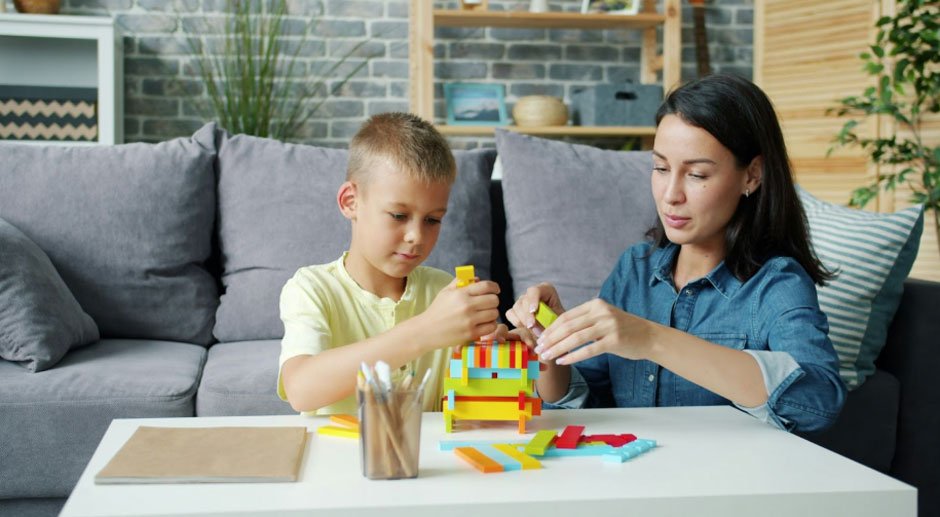Family life resembles an intricate ecosystem where every element affects the whole. When a child thrives, parents feel energized and purposeful. When adults maintain their health, they possess the stamina and clarity to nurture their children effectively. Yet many families struggle with a peculiar imbalance: pouring all their energy into childcare while neglecting their own wellness, or pursuing personal health goals that leave little room for attentive parenting. The truth is simpler than it appears. Family health isn’t a competition between generations but a symphony where each member’s wellbeing harmonizes with the others.
The intersection of childcare and adult health reveals fascinating patterns. Parents who prioritize structured developmental support for their children often discover renewed motivation for their own health goals. Conversely, adults who maintain consistent exercise routines and healthy eating patterns naturally create environments where children absorb these habits effortlessly. This guide explores practical strategies for families seeking to balance childhood development with adult wellness, recognizing that both require intentional planning, consistent effort, and the wisdom to integrate rather than separate these essential responsibilities.
The Foundation of Child Health: Early Childhood Intervention

Every child’s journey unfolds at their own pace, yet certain milestones signal healthy development. Early Childhood Intervention programs provide structured support for children from birth through preschool years, addressing developmental delays, nutritional needs, and emotional growth. These interventions aren’t reserved only for children with diagnosed conditions; they represent proactive approaches that benefit all children by establishing strong foundations for learning, social interaction, and physical coordination.
The benefits of Exploring Mates Early Childhood Intervention extend across multiple domains. Cognitively, children develop problem-solving skills and language abilities through targeted activities. Socially, they learn to interact with peers, share resources, and navigate emotions. Physically, interventions ensure proper motor skill development, from fine movements like grasping utensils to gross motor activities like running and climbing. Early detection of challenges allows families to address issues when interventions prove most effective, preventing small concerns from becoming significant obstacles.
Parental involvement transforms intervention programs from clinical exercises into lifestyle changes. Caregivers who understand intervention principles can reinforce strategies at home through play, mealtime conversations, and daily routines. Simple practices like reading together, encouraging independent problem-solving, and maintaining consistent schedules amplify professional interventions. Tracking developmental milestones helps parents celebrate progress while identifying areas needing additional support, creating a comprehensive approach to childhood wellness.
Nutrition and Lifestyle: Children and Adults Together
The kitchen serves as ground zero for family health. What we eat influences energy levels, mood stability, cognitive function, and long-term disease risk across all ages. Rather than preparing separate meals for children and adults, families benefit from unified approaches that satisfy everyone’s nutritional needs while teaching children healthy eating patterns they’ll carry into adulthood.
Balanced family meals incorporate proteins for growth and repair, whole grains for sustained energy, colorful fruits and vegetables for vitamins and fiber, and healthy fats for brain development. The key lies in presentation and flexibility. Children may prefer vegetables cut into fun shapes while adults appreciate elaborate salads, but both receive similar nutritional benefits. Establishing regular meal schedules prevents the chaos of constant snacking while ensuring both children and adults receive adequate nutrition without extreme hunger that triggers poor food choices.
Hydration often gets overlooked in busy households. Children absorbed in play and adults managing responsibilities may not drink enough water throughout the day. Keeping water bottles accessible, flavoring water naturally with fruit slices, and modeling consistent hydration helps everyone meet their fluid needs. Supplementation requires more nuance, with children potentially needing vitamin D or iron based on dietary patterns, while adults might benefit from probiotics or omega-3 fatty acids depending on individual health status and goals.
Physical Activity: Integrating Exercise for All Ages

Movement is medicine at every life stage. For children, physical activity builds strength, coordination, and confidence while burning the abundant energy that makes sitting still feel impossible. For adults, exercise manages stress, maintains muscle mass, supports cardiovascular health, and addresses specific fitness goals ranging from general wellness to targeted improvements.
Children’s activity needs vary by age. Toddlers benefit from unstructured play that develops motor skills through exploration. Preschoolers enjoy games that incorporate running, jumping, and balancing. School-age children can engage in organized sports or structured activities that build specific skills while fostering teamwork. The unifying principle is making movement fun rather than forced, establishing positive associations with physical activity that persist throughout life.
Adult exercise routines typically require more structure. Strength training maintains muscle mass and bone density that naturally decline with age. Cardiovascular exercise supports heart health and endurance. Flexibility work prevents injury and maintains range of motion. The challenge lies in finding time for adult exercise while managing childcare responsibilities. Creative solutions include waking early for workouts before children rise, exercising during children’s activity classes, or incorporating children into adult routines.
Joint exercises offer elegant solutions to the time-crunch dilemma. Family bike rides provide cardio for adults while teaching children cycling skills. Dance parties in the living room burn calories while creating joyful memories. Playing tag, throwing balls, or creating obstacle courses keeps adults moving while entertaining children. For adults with specific goals like non invasive thigh fat reduction, combining targeted exercises with family activities maintains consistency despite demanding schedules.
Screen time management affects the entire family’s activity levels. Children exposed to excessive screens develop sedentary patterns while missing opportunities for active play. Adults scrolling phones or watching television after work miss exercise windows and model passive behavior. Establishing family screen time limits and designating active hours encourages movement for everyone, replacing passive entertainment with engaging activities that strengthen bodies and relationships.
Mental Health and Emotional Wellbeing
Physical health captures headlines, but mental and emotional wellbeing determines quality of life. Parents juggling work, household management, and childcare face relentless stress that affects mood, patience, and overall health. Children navigating developmental challenges, social dynamics, and academic pressures need emotional support and safe spaces to express feelings. Addressing mental health as a family priority benefits everyone.
Parental stress doesn’t simply affect adults; children absorb parental anxiety through tone of voice, facial expressions, and household atmosphere. Acknowledging stress rather than suppressing it allows adults to develop healthy coping mechanisms. Deep breathing exercises, short meditation sessions, or journaling provide outlets that prevent stress from accumulating into burnout. Professional support through counseling offers valuable perspective when parenting challenges feel overwhelming.
Child mental development requires nurturing emotional intelligence alongside academic and physical growth. Children need validation for their feelings, help identifying and naming emotions, and strategies for managing big feelings appropriately. Creating safe, predictable environments where children know they’re loved unconditionally provides security that supports healthy emotional development. Social learning happens through play dates, family interactions, and guided practice in sharing, empathizing, and resolving conflicts.
Family mindfulness practices benefit multiple generations simultaneously. Simple breathing exercises calm both anxious children and stressed adults. Gratitude practices at dinner help everyone focus on positive aspects of their day. Even young children can participate in modified meditation, learning to notice their bodies and emotions without judgment. These practices build emotional resilience that serves families during challenging times.
Sleep hygiene deserves special attention in family health planning. Children need consistent bedtime routines and adequate sleep for growth, learning, and emotional regulation. Adults require quality sleep for cognitive function, immune health, and stress management. Establishing household sleep schedules that accommodate everyone’s needs, minimizing evening screen exposure, and creating calm bedtime environments supports restorative sleep across generations.
Preventive Healthcare: Routine Check-Ups for Families
Prevention beats treatment in both cost and quality of life. Regular health monitoring catches problems early when interventions prove most effective and least invasive. For families, coordinating preventive care for all members ensures nothing falls through the cracks while managing multiple schedules efficiently.
Children’s health checks follow developmental stages. Infants and toddlers need frequent growth monitoring, vaccination schedules, and developmental screenings. Preschool and school-age children benefit from annual check-ups that assess growth patterns, vision, hearing, dental health, and developmental progress. These appointments provide opportunities to discuss nutrition, behavior, and any parental concerns with healthcare providers who track children’s progress over time.
Adult preventive care becomes increasingly important as metabolic changes affect health risks. Blood pressure monitoring, cholesterol screening, and diabetes testing identify cardiovascular risks before they manifest as serious conditions. Physical exams detect lumps, skin changes, or other abnormalities that warrant further investigation. Women need specific screenings while men require others, but both genders benefit from proactive health monitoring that treats risk factors before they become diseases.
Lifestyle screenings address concerns common in modern life. Obesity assessments help families understand weight-related health risks and develop strategies for improvement. Joint evaluations can identify problems before they limit mobility. Mental health screenings normalize discussions about depression, anxiety, and stress, encouraging treatment when needed. Integrating these assessments into regular care demonstrates that mental and physical health deserve equal attention.
Coordinating appointments efficiently respects the reality of busy family schedules. Some practices offer family appointment slots where multiple members receive care during a single visit. Telehealth options provide convenient follow-ups for minor concerns without requiring travel and waiting room time. Tracking appointment schedules through shared calendars ensures nothing gets missed while distributing the planning responsibility among adults in the household.
Household Safety and Injury Prevention

Home should be the safest place for every family member, yet preventable injuries occur regularly in residential settings. Proactive safety measures protect children’s natural curiosity while ensuring adults can pursue health activities without unnecessary risks. Thoughtful household organization creates environments where everyone can thrive safely.
Childproofing evolves as children grow. Babies require outlet covers, cabinet locks, and gates preventing access to stairs. Toddlers need secure furniture anchoring since climbing becomes irresistible. Preschoolers benefit from clear boundaries about which areas they can access independently. School-age children can learn safety rules rather than relying solely on physical barriers. Throughout these stages, secure medication storage, locked cleaning supplies, and protected sharp objects prevent poisoning and injury risks.
Fall prevention matters across age groups. Children fall frequently as they develop coordination, requiring soft play surfaces and supervision during climbing activities. Adults pursuing fitness goals need appropriate footwear, clear exercise spaces, and proper technique to prevent injuries. Ensuring adequate lighting, removing tripping hazards like loose rugs, and maintaining clutter-free pathways protects everyone in the household.
Fitness-related safety requires attention when adults exercise at home. Proper equipment setup prevents weight-related injuries. Understanding correct form for strength training protects joints and muscles. Exercising in spaces separate from children’s play areas prevents collisions. Adults modeling safe exercise practices while explaining their precautions teach children that physical activity requires respect and proper preparation.
Creating a Balanced Routine: Family Health Planning
Intention transforms aspirations into reality. Without structured planning, family health goals succumb to the urgent demands of daily life. Creating sustainable routines that accommodate everyone’s needs requires both strategic thinking and flexibility to adapt when circumstances change.
Daily scheduling begins with identifying non-negotiable elements: meal times, children’s school schedules, work commitments, and sleep requirements. Within these fixed points, families can allocate time for exercise, meal preparation, childcare activities, and personal wellness practices. Visual schedules help children understand daily flow while reducing transition resistance. Adults benefit from scheduling their own health activities like they would important meetings, treating personal wellness as non-optional.
Shared responsibilities prevent caregiver burnout while teaching children valuable life skills. Dividing meal preparation, cleanup, and household tasks among capable family members distributes workload fairly. Age-appropriate chores give children ownership in household functioning while building competence and self-esteem. Partners coordinating childcare coverage enable each other to pursue individual health goals without guilt or resentment.
Goal setting provides direction without creating rigid expectations that breed frustration. For children, tracking developmental milestones celebrates progress while identifying areas needing support. For adults, specific health objectives like improving cardiovascular endurance or achieving body composition goals provide motivation for consistent effort. Writing goals down, reviewing progress regularly, and adjusting approaches based on results keeps families moving forward without perfectionist pressure.
Technology offers tools that simplify health tracking without adding stress. Apps monitor children’s vaccination schedules, growth patterns, and developmental milestones. Fitness trackers record adult activity levels and progress toward goals. Shared family calendars coordinate appointments and activities. Nutrition apps help families understand dietary patterns and areas for improvement. The key is using technology as a helpful servant rather than a demanding master, maintaining focus on actual health rather than data collection.
Long-Term Benefits of Integrated Family Health Practices
Short-term efforts compound into long-term transformation when families maintain integrated health approaches. The benefits extend far beyond immediate improvements, reshaping family dynamics and individual trajectories in profound ways that justify the consistent effort required.
Physical health improvements manifest across generations. Children growing up with nutritious diets and regular activity face lower risks of obesity, diabetes, and cardiovascular disease as they age. Adults maintaining fitness and healthy eating patterns enjoy more energy, better mobility, and reduced disease risk. These physical benefits create upward spirals where feeling good motivates continued healthy choices, making wellness increasingly effortless over time.
Financial and time efficiency emerge from coordinated family health approaches. Preventing disease through healthy lifestyles saves enormous medical expenses compared to treating chronic conditions. Meal planning reduces food waste and takeout spending. Coordinated healthcare appointments minimize time away from work. These efficiencies free resources for activities that enrich family life beyond basic health maintenance.
Role modeling creates the most powerful legacy of integrated family health. Children observing parents who prioritize exercise, choose nutritious foods, manage stress effectively, and maintain their health internalize these behaviors as normal rather than exceptional. This modeling influences children’s choices throughout their lives, potentially affecting their own children in turn, creating multi-generational health advantages that ripple through family trees.
Conclusion
Family health reveals itself not as competing priorities but as interconnected elements of a unified whole. Children’s development flourishes when supported by engaged, healthy adults. Parental wellness sustains the energy and presence required for attentive childcare. The strategies explored throughout this guide demonstrate that integrating childhood development with adult health creates synergies more powerful than addressing either in isolation.
Early intervention establishes strong foundations for children’s growth across physical, cognitive, and emotional domains. Thoughtful nutrition nourishes every family member while teaching children lifelong eating patterns. Physical activity benefits all ages when incorporated creatively into family routines. Mental health practices build emotional resilience that serves families during both ordinary days and extraordinary challenges. Preventive healthcare catches concerns early, safety measures protect against preventable injuries, and intentional planning transforms aspirations into sustainable realities.












